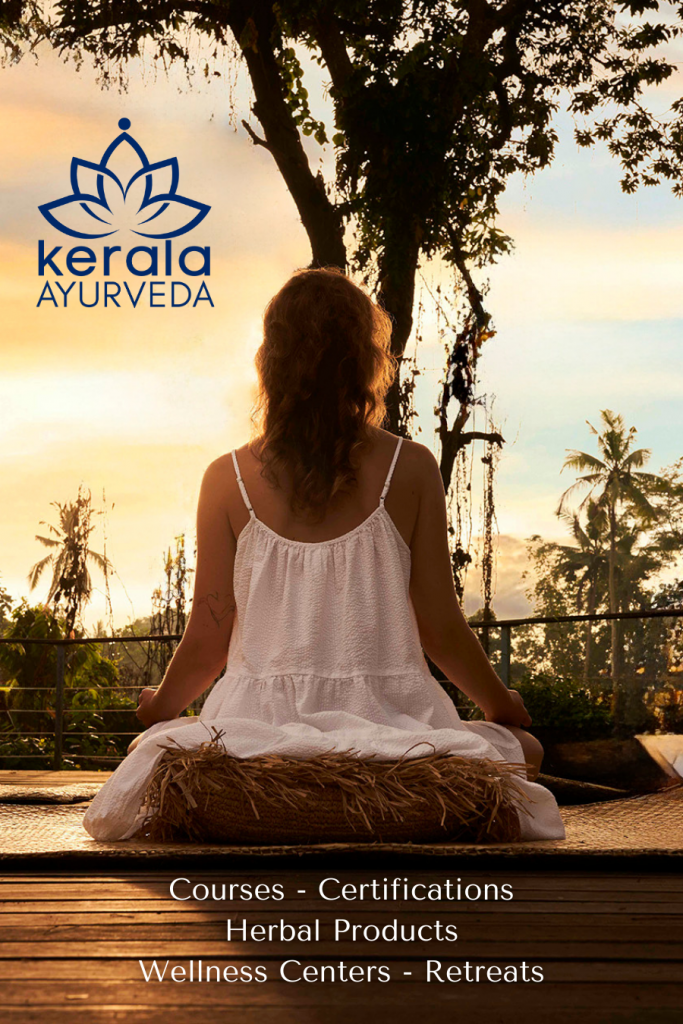
Jul 28, 2024 | Yoga Conference, Yoga Festival, Yoga for First Responders
by Lisette Cheresson
Ahh retreats — the calm, the nourishment, the soul-bolstering experience of being in a group of like-minded individuals who chose to spend precious time upleveling their lives by committing to self-care and development. For the participant, a retreat is a gift to the heart; an opportunity to grow, evolve, and pamper. And yet leading a retreat can be a daunting task for even the most seasoned professional. The logistical overload can be overwhelming, and take energy away from the things that matter most: creating the vibe, holding the space, and curating the content for eager attendees. But you don’t have to go it alone.
“I’m on a mission to make life changing retreats available to as many people as possible,” says Michelle Meyers, of AZ Soul Retreats. “I am obsessed about working with wellness practitioners, yoga teachers, and people in the healing arts to help them truly leverage the magic that retreats can create for their business — not only in the transformations that happen for people, but also by bringing in the abundance that can come along with retreats.” With the right approach, retreats can be a beautiful channel for growth and prosperity, but without proper planning, they can risk leaving potential untapped, or even creating financial strain.
Michelle doesn’t just handle logistics and the nitty gritty of retreat planning, she’s a support in the soul-side of retreat planning as well. She knows that hosting a retreat can be a way to both reinvigorate a love of the practice for attendees, and reignite a passion for practitioners as well. Rather than a retreat bogging down a practitioner with heavy spreadsheets and grocery shopping, the services of AZ Soul Retreats create space for the leader to ideate, imagine, and hold onto the joy of creation.
What Does AZ Soul Retreats Offer?
If you’re interested in hosting a retreat, AZ Soul Retreats takes stress out of the process. From creating a professional landing page to helping you execute proven marketing strategies, Michelle and her team take care of the details. They handle deposits and “do all of the plumbing for payments”, removing the financial and logistical burden so you can focus entirely on your attendees.
While Michelle supports retreats outside the state, her “area of genius” lies in Arizona. With a deep network of venues, co-facilitators, and vendors, she streamlines every aspect of organizing a retreat. AZ Soul Retreats takes care of the behind-the-scenes—from contracts to customer communication—allowing you to stay connected to the heart of your work and deliver an unforgettable experience.
Michelle knows that the folks she works with are extremely capable entrepreneurs. Her services provide a kind of “elasticity” to what her clients can offer, she says, by taking “the worry and stress of trying to manage all the steps of retreat planning while they’re running a business. My job is to highlight, and if they want, elevate their vision,” she says. “It’s to make sure that [the retreat] vibe is consistent through all details, including how I engage with the client. I match their vision. It’s not about me, it’s about them.”
What Makes AZ Soul Retreats Different?
With more than 25 years in the corporate world managing large-scale operations and customer experience, Michelle has mastered the art of blending impactful experiences with financial success. What truly sets her apart, though, is her ability to genuinely connect with people. She entered the business of retreat planning with deep expertise and an innate understanding of what makes people tick—and what it takes to make a product or experience successful.
This gives her a unique perspective and set of skills when it comes to helping a visionary teacher or leader. Her clients say that they love her ability to walk the balance beam of “business acumen and woo-woo,” always allowing the vision of the leader to be her guide. She’s one of those rare talents in our community that can straddle intention and financial success — she’s able to help bring your ideas and offering to the world without compromise, while holding true to the ideals of mindfulness and yogic principles.
Ready to Learn More?
Michelle will be offering “Office Hours” at SYF2025, but don’t expect her to sell you on the idea of working with AZ Soul Retreats. The way she approaches business is consistent with her mission of making retreats accessible to as many people as possible. “I’m not a high sales, high pressure kind of person,” she says. “My mantra is to be generous in giving advice and resources. It’s about being of service in that environment, in the spirit of the Sedona Yoga Festival.”
If you’re interested and ready to learn more, be sure to stop by the AZ Soul Retreats booth at SYF2025, and chat with Michelle. In the meantime, scope their website here. Register for SYF2025 today!
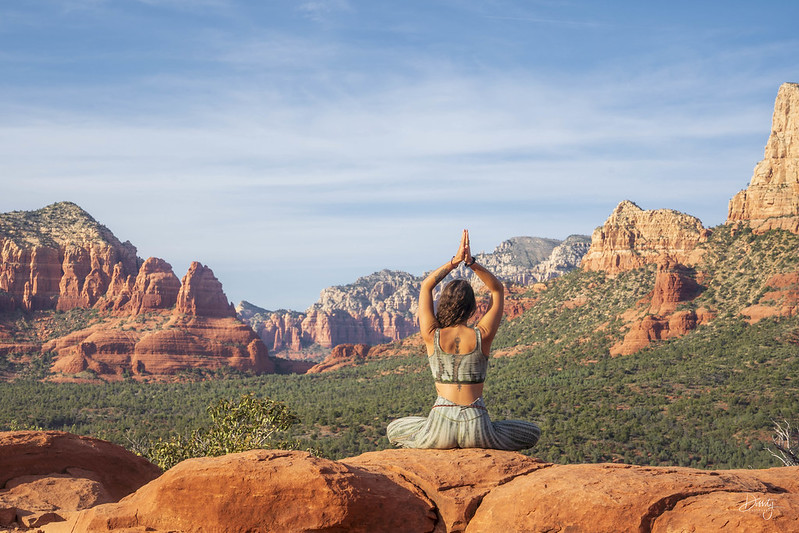
Mar 11, 2024 | Sedona Yoga, Yoga Festival Experience
Ty Dobbs is a renowned yoga photographer and conscious content creator, who has been making SYF look good since 2018. His talent lies not only in his ability to curate and create art with shape and light, but also in the energy of his soul, which creates the space for his subject’s true essence to shine through. His work has taken him all over the country, and we’re grateful that he will be returning to SYF in 2024. We sat down with Ty to learn a bit more about his process and his art.
If you’re an SYF presenter and are interested in booking Ty for a private shoot during the event, please reach out to Ty directly!
——
SYF: You’re a Texas native. In 2017, you made the move from Dallas to Southern California. How did this journey influence your photography?
Ty Dobbs (TD): This move was big for me. Having studied Joseph Campbell and The Hero’s Journey for years prior, I knew that I was facing my largest threshold yet. With that being said, my photography bloomed out of the experience because I propelled myself into a land of extensive opportunity. From sweeping National Park landscapes, to significant portraiture opportunities. My art grew rapidly once I landed in CA.
SYF: Growing up, you found joy in using cameras to ‘freeze time.’ What is it about photography that continues to captivate you?
TD: Photography always had that magical and fascinating aspect with it growing up. Now, I seek the use of photography (and videography) as a way to express oneself and share a message. I also still value photography as a “time travel hack.” It has the ability to take us back to a distant and forgotten memory… sometimes allowing us to feel the rush of emotions all over again, good or bad.
SYF: You say on your website that you attended “YouTube University.” How has being largely self-taught shaped your approach to photography?
TD: Ah yes, the great YTU. Being nearly 100% self taught means I do not have a conventional way of capturing the moment. It also means a lot of mistakes, but those mistakes are often beautiful in their own way. Instead of going through any formal schooling where I was instructed on the “good and bad,” I was able to determine my own style and answers to each of those labels.
SYF: You describe yourself as a world traveler and a student of life. How has traveling influenced your work, especially in your Vista Views and Memory Moments?
TD: Travel is one of the most potent doses of education I could have asked for on my journey of discovering my craft. It allows endless subjects, experiences, and stories that each leave a lasting mark.
I consider Vista Views and Memory Moments the two pillars of my photography work. Vista Views is my landscape portfolio and Memory Moments consists of my commercial and portrait work. Both are equally as important. Vista Views are quite literally the epitome of the subject matter, while Memory Moments have contributed to the relationships that have formed via traveling and living different places.
SYF: Having your work featured in art galleries, like in Big Bear, CA, must be exhilarating. How does it feel seeing your work displayed in such settings?
TD: It truly is exhilarating. It feels amazing! It has been a few years since my Big Bear gallery days and still my wife encourages me to find a new local gallery where we live now in Southern Utah. I’m sure there will be a time where I enter into the local gallery scene again. I believe pictures are meant to pull you in… and that is more challenging to accomplish in an Instagram post or digital screen.
SYF: As a yogi and a photographer, how do you feel these two paths intersect in your life and work?
TD: I was a photographer first, then I found yoga — and then I married the two into Yoga Photography with the help of some great mentors (ahem… Robert Sturman). The path of yoga allowed me to be more conscious with where I pointed my camera. Searching for the light became more than just a metaphor. As the Yogi within me grew stronger, so did my desire to capture people living their purpose. That has contributed to some pretty incredible international trips and experiences at festivals all around the globe!
SYF: Having photographed the Sedona Yoga Festival for several years, what are some of your most memorable moments or photographs from the festival?
TD: I will never forget my first SYF in 2018, and just being amazed by the intention and community. It felt like home. Now with each year that I return, I get to reconnect with new and old friends. It has become one of my absolute favorite annual pilgrimages.
SYF: In your opinion, what makes a great photograph, especially in the context of a vibrant event like SYF?
TD: In my opinion what makes a great photograph is being able to feel something when you look at it. In the sense of SYF, that could be the beautiful, warm, and welcoming landscape. Or a participant moved to tears from a transcendental meditation they just experienced. SYF provides so many beautiful moments to all who attend. That makes it so easy to capture the magic — if you are tuned into its frequency. ;)=
SYF: What advice would you give to aspiring photographers who wish to follow a path similar to yours?
TD: I would say to go for it! If picking up a camera and pointing it at ANYTHING makes time feel as though it stops… then photography is probably a path for you to consider. Don’t let experience, or equipment hold you back. Seek opportunities to work that Creativity muscle as often as possible. Live in that joy and be prepared for the miracles that will soon follow.
SYF: What future projects or dreams are you currently pursuing or hope to pursue?
TD: I am currently working to build a large online course database for practitioners of all styles. From Yoga to Acupuncture and even Detoxing, I have had the pleasure of working with over a dozen experts in their field. I have always found the quote “If I have seen further [than others], it is by standing on the shoulders of giants” by Newton both fascinating and inspiring.
We live in an age where we can learn and develop at increasingly rapid rates, and we can attempt to consume a career’s worth of knowledge in a rather short period of time. This realization left me feeling inspired to offer a platform for conscious entrepreneurs to share their skills. I call my platform Inspired Conscious Content. My current mission is to help colleagues discover new ways to put themselves out there!
SYF: Finally, is there a message or a thought you’d like to share with our readers and your future clients?
TD: To anyone reading that has NOT been to SYF so far, my first message is to tell you that you’re missing out by not going each and every year. The experience is similar to that of an intensive yoga retreat in some distant land. It will leave you feeling full and embodied! To anyone who would like to connect and hear more about photography, videography, or Inspired Conscious Content… Please reach out! I would love to chat and see if there is an opportunity to work together. See you all at SYF.
Join Ty and other luminaires at the 11th annual Sedona Yoga Festival, March 14–17. Passes available here!
Lead image, of course, by Ty Dobbs.
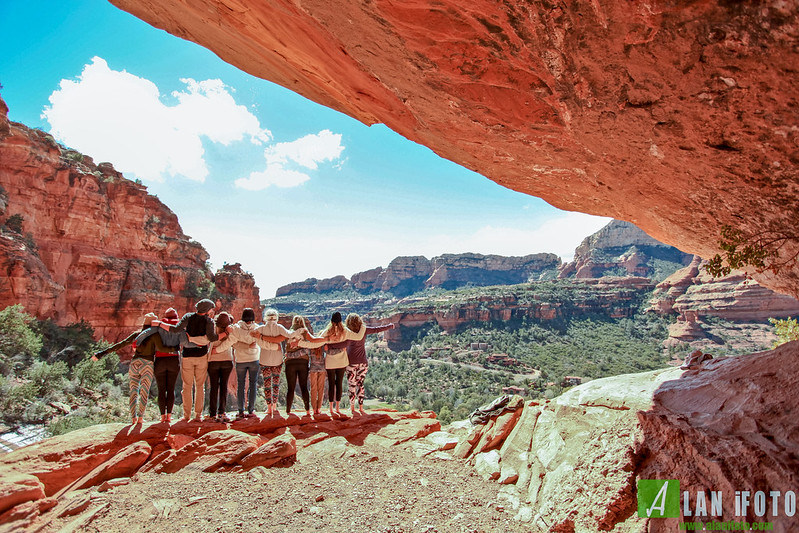
Mar 6, 2024 | Sedona Yoga
by Jill Robinson
Quantum physics, with its enigmatic principles and mind-bending discoveries, seems an unlikely path toward understanding our transformative potential as a practicing yogi. However, if we approach this path through the lens of David Bohm’s theory of the holomovement, we find that Yoga’s philosophy and quantum physics share an important core principle–interconnectedness.
The practice of Yoga seeks to harmonize the mind, body and spirit. Through techniques encompassing physical postures, breath control, meditation and spiritual philosophy, Yoga allows us to explore the depths of human consciousness and the interconnectedness of the individual within the Cosmos.
Both quantum physics and Yoga invite us to transcend the illusion of separation. This awareness infuses our practice of Yoga with a deeper resonance, inspiring us to embody the principles of unity within ourselves and expressed outwardly through social action for the greater good.
Weaving Together Practice with Purpose
As yogis, we each have the power to be a catalyst for change. When we are in flow within ourselves, we can better amplify the quality of our relationships and community participation. It’s why taking action rooted in love and compassion, finding harmony within and in our relationships, are all expressions of our yogic powers enhanced by the scientific understanding that we truly are connected. Our actions and vibrational qualities matter in how we are best able to transform ourselves and our communities.
Everyone’s wisdom and experience is needed in our collective efforts to transform the world. Fortunately, our personal practice allows us to tap into our unique gifts and purpose–all vital within the Holomovement.
Knowing that we each play a part in our evolutionary unfolding, we find a greater meaning in our practice and how it can be applied to every aspect of our lives. Within the Holomovement’s network of Holons, we can amplify this in action through collaboration and intention.
The holotropic attractor to the Holomovement’s Theory of Change is the ability to offer actionable purpose while simultaneously building community within this movement. The Holomovement is set into motion through self-organizing Holons, groups of three or more individuals engaging in community action within a framework of the Holomovement’s unifying principles.
This collaborative network of Holons is an expansive, creative ecosystem accelerating humanity’s highest potential. Within the Holomovement, each Holon has an opportunity to collaborate and co-create with fellow groups, creating an exponential wave of impact and a critical mass of positive action.
The Science and Spirit of Creating a Global Tipping Point
The key to creating this global transformative tipping point, and the Holomovement Theory of Change, is found in the equation for quantum physics E=hf. Taking a bit of creative freedom, founding steward of the Holomovement Emanuel Kuntzelman explains the potential found in this equation:
“’E’ symbolizes the energy generated from the impact of our decision to act; ‘h’ represents intention of compassionate action for the greater good; and ‘f’ stands for the frequency of our consciousness and spiritual connection that coheres in love and Oneness. This reveals how with enough action, informed by higher consciousness, we can create a world that works for all.”
Unlocking this transformative change lies within Planck’s constant (h), the input of action in E=hf. Whether we are conscious or unconscious of our actions, our energetic waves are already rippling outward with their effect. The Holomovement is an invitation for each of us to consciously become the h factor. As Yoga practitioners, this is a chance to align practice with purpose, and enjoy the experience of interconnectedness both on and off the mat.
Learn more about aligning your practice with social action during the Sedona Yoga Festival! Stewards of the Holomovement will be participating and sharing how our Yoga community can create holons to support personal and social transformation. Tickets available here.
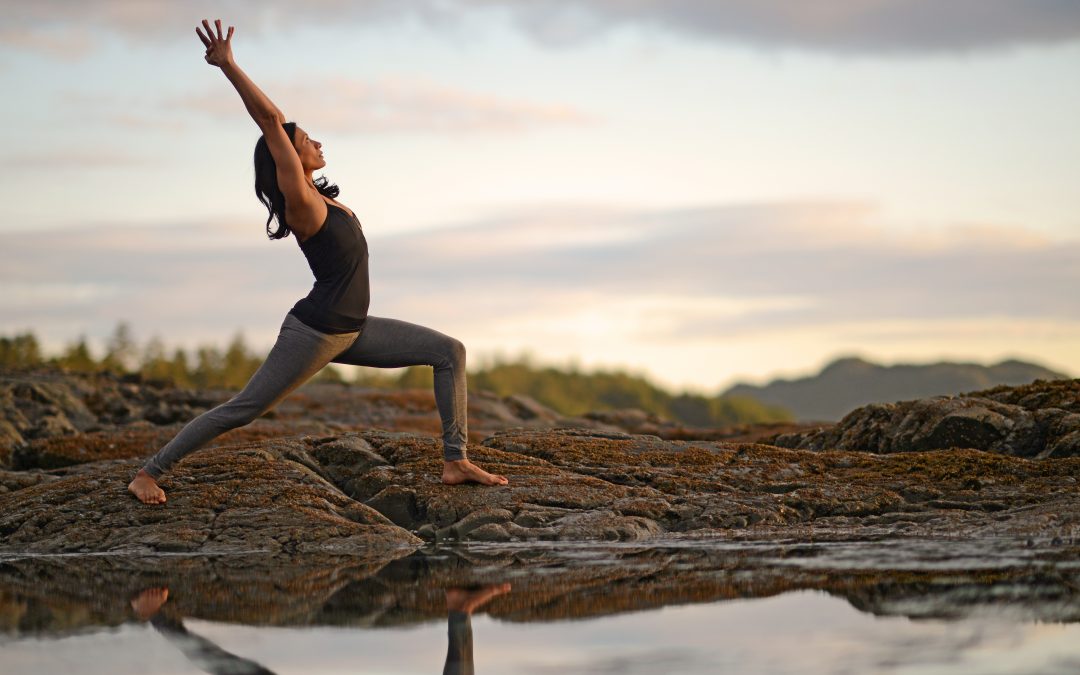
Mar 4, 2024 | Sedona Yoga
by Insiya Rasiwala-Finn
“No one is an island.” I paraphrase the poet John Donne here, which is a thought that always comes to mind whenever I think about Ayurveda, the ancient wisdom tradition from my homeland of India. It is only when we allow for and witness the relationship between all aspects of life, that we can begin to understand the healing power of Ayurveda. But what does that mean? What is the interplay of this ancient wisdom tradition and our modern relationships?
Defining Relationship
At a time where the fabric of how we live is changing so rapidly, in which we struggle with isolation and a culture of extremes, it can be helpful to dive deeper into traditions which have withstood the test of time. These ancient maps to living well offer us potent insights into how we may be able to bring more connection and peace into our present day lives. Peace, after all, begins with our relationship to ourself first, and then expands into how we connect with all beings and the environment around us.
To understand why, let’s discuss a foundational principle of Ayurveda: that we are made up of the very same building blocks that exist in the entire universe. Sometimes it’s called the principle of the Macrocosm and the Microcosm.
What are these building blocks of all life? The seers of the past called them the Five Great Elements. Earth, Water, Fire, Air and Space.
Consider the earth in the universe and the earth in your own body. The bones and the muscles, the dense parts of ourself, are created from calcium and phosphorus and magnesium — all minerals that exist in the rocks we see strewn around Sedona. There is water outside and within. The rivers, lakes and oceans of our planet, the water contained in plants; it is what gives our cellular structure pliability and movement and flow. It is in our blood and our lymph. The third element is Fire. The external fire, which is the universal fire, is the sun, what cultures across millennia have worshipped for its life giving form; as well as borne witness to its destructive power. Within us, we have the fire of digestion that helps us to transform not just food but also all thoughts, sensory information and sensation that we take in. This internal fire is called our agni.
This is again one of the main pillars of Ayurveda, which tells us right off the bat that we are not just what we eat; we are more importantly, what we digest. Our inner fire is the fire of our passion, our ambition and our zest for life, it is also the fire that transforms what we take in to live our lives every day. Keeping this agni balanced and healthy is what will allow us to thrive and live a life of purpose and vitality.
The last two elements are Air and Space. Air is the life-giving air we breathe in and out — it connects us to our larger environment and gives us life. Without air where would we be? If you did think you were an island, this is a good time to put that thought at rest!
And finally, we have Space or Ether, the most subtle aspect of the cosmos. In yogic thought, Ether is the spaciousness from which the Aum sound of creation arises from and dissolves back into. Within us, Ether is the space between each inhale and exhale; the pause between thoughts. It is the aspect of ourselves that is most connected to a higher self, to infinity.
Understanding Balance
Ayurveda tells us that when we are in balance it is because the elements within us are flowing in and out of us in a balanced way. Balance means that we are taking in the right amount of of food, sleep, and sensory information, which includes touch, connection, and what we see with our eyes, hear with our ears and what we eat. Balance means that we are transforming these inputs into the right resources for our mind body spirit continuum to thrive. Additionally, balance means that we are eliminating what we don’t need. When one of these processes is skewed, we begin to feel uneasy and out of balance, and we move from health towards disease.
How do we minimize the possibility of disease according to Ayurveda? We can begin by taking simple daily steps that create habits of flow, sustenance and ease. By aligning with universal principles of the elements, we can experience wellbeing and vitality and bounce back from challenges with resilience and happiness.
Here are 3 simple tips you can incorporate into your life today, based on Ayurvedic wisdom.
- Minimize technology. Turn off all devices at least one hour (ideally two) before you sleep so that your body is not processing all the high speed sensory information before bedtime, but is instead able to turn its attention to helping your nervous system calm down and rest.
- Eat seasonally. Local, seasonal foods are what offer us the best benefits against seasonal shifts. And you will notice that when you eat in this way, you begin to crave exactly what you need in that particular season. For example as we move towards spring, you may want to eat less denser foods, e.g. reduce the amount of dairy you might eat or the sweet taste, and instead explore more fresh, vibrant bitter greens that are sprouting up with life to support the natural cleansing of spring.
- Commit to doing at least one thing slowly and with intention every day. It could be watering your plants, reading a poem, making time to journal, a yoga or meditation practice. Life is moving very fast these days; and we must balance out the speeding whorl of endless to do lists with pauses that remind us that we are connected to something higher.
Learn more and dive in deeper into Ayurveda with Insiya at the festival! Passes are still available. Use code INSIYA10 for 10% off any Pass — Day Passes and 2-Day Passes also available!
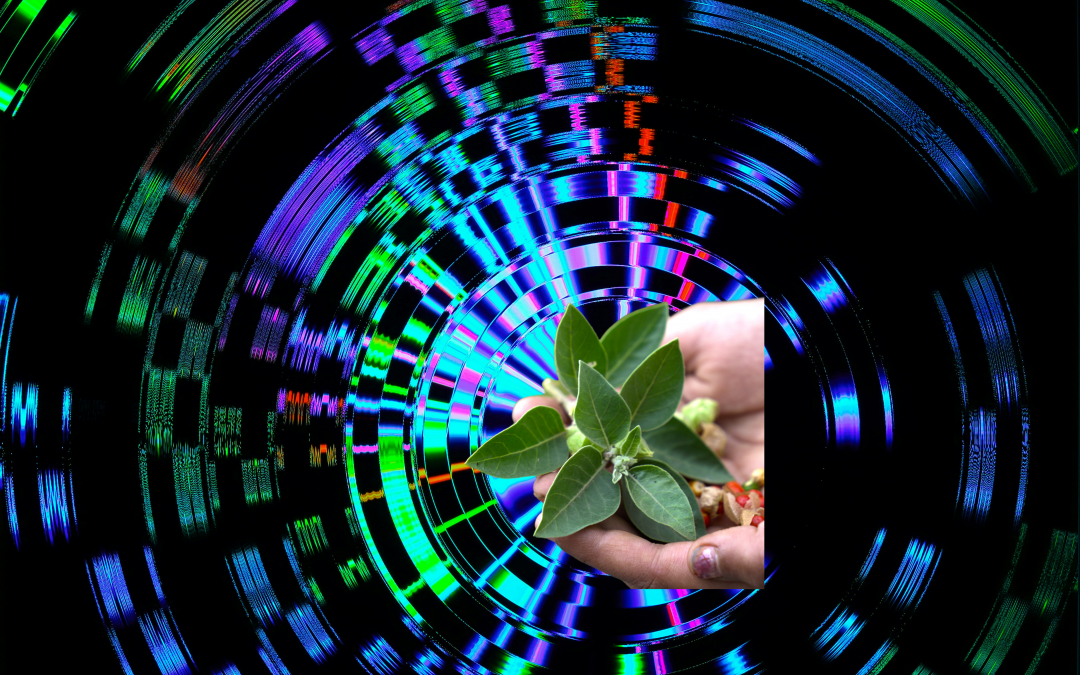
Feb 26, 2024 | Yoga Festival Experience
by Jill Robinson
Ayurveda and quantum physics might seem a strange pairing when applied to Yoga philosophy. Although these two frameworks might feel miles apart, they both speak to the importance of awakening to our interconnectedness, within our mind, body and spirit and the larger Oneness of the Cosmos.
Yoga practitioners have long known the vital link between the health of our inner and outer worlds, but only recently has Western science been able to prove our Oneness as fundamental to our universe. The implications of this merging of science and spirit are extraordinary in how we can show up as practitioners and world changers.
It’s why we’re thrilled to have Vaidya Jayarajan Kodikannath, “Dr. J”, from Kerala Ayurveda and Emanuel Kuntzelman, founding steward of the Holomovement, presenting on this topic together during the Sedona Yoga Festival this March. The language used within Ayurveda and quantum physics might differ, but they are ultimately two paths leading toward wholeness.
Interconnectedness at the Quantum Level
American physicist David Bohm, a contemporary of Einstein, believed there is an Implicate Order, which is the source of consciousness and the field holding the infinite potential of the universe. The Implicate Order expands and grows into the Explicate Order as manifest reality. Holding these two inner and outer spaces together is what Bohm defined as the ‘holomovement.’
This theory offers an explanation of how we can all be ‘one’ despite what appears to be a reality of separate beings. For Emanuel, reading Bohm’s book Wholeness and the Implicate Order was a lightbulb moment.
“I was first introduced to David Bohm back in 1984,” says Emanuel. “As I read that book, I found the term ‘holomovement,’ and for me it was the most beautiful concept I had come across in describing the oneness of consciousness. What’s more, it’s a great term, a single word describing a movement of wholeness. What could be better?”
Bohm’s theory of quantum mechanics, proposed back in 1951, has now been vindicated by the Nobel prize in physics of 2022. The award establishes non-locality, which Bohmian mechanics requires, as a “fundamental feature of the universe.” It further validates this concept of universal Oneness, bridging ancient spiritual wisdom with modern science and offers a sociological model for uniting humanity in our many pathways toward higher consciousness.
It was a defining moment for Emanuel in the importance of a social movement awakening us to our interconnectedness, guided by science and spirituality. It is imperative that the Holomovement (with a capital ‘H’), must also have a theory of change that is nourished by deep connection, compassion and purpose.
Health and Harmony Starts Within
Understanding the interconnectedness of the very building blocks of our universe is just the start, but how does this apply to our personal yoga practice and Ayurveda? At its most expansive, Yoga is “a practice of unity, an exploration of what it means to link body and breath, thoughts and movements, stillness and evolution.”
This philosophy guides us toward the integral health of mind, body and spirit. The Yoga Sutras offer wisdom for a way of living that is purposeful and mindful of our interconnectedness within our own selves that deeply affects our communities and our human family.
Ayurveda, (a Sanskrit word that means “science of life” or “knowledge of life”) is one of the world’s oldest whole-body healing systems that has long understood the necessity of holistic health. Understanding the doshas, diet essentials and daily routines of Ayurveda provides practical tools to personalize your practice and enhance the transformative power of our Yoga practice.
At the heart of this ancient healing system is understanding our cellular interconnectedness and what it means to be one cell of the interconnected whole. Like the holomovement’s unbounded wholeness, Ayurveda is a practice of interconnectedness.
“The very definition of life in Ayurveda is that nature flows through you without interruption,” says Dr. J. “You are always in relationship with everything — including fellow human beings, animals, birds, plants, nature. Your sustenance is based on an in-sync relationship with nature and its rhythms.”
Learn more about creating harmony from the inside out during the Sedona Yoga Festival! Dr. J and Emanuel will be on a panel in conversation on the similarities of Ayurveda and the Holomovement, and how they are powerful resources in personal and social transformation. Be sure to reserve your Pass before the schedule goes live to not miss a beat! Tickets available here.






